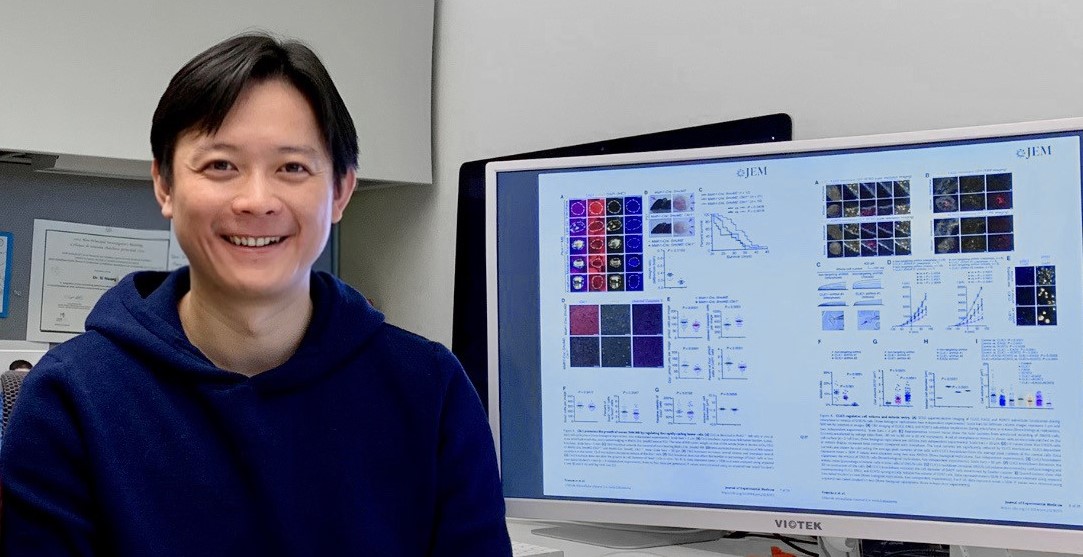OICR-supported research has reshaped our understanding of the cellular barrier that makes it difficult to treat medulloblastoma.
New discoveries about the nature of the blood-tumour barrier could help overcome one of the biggest challenges in treating brain tumours.
A team led by Dr. Xi Huang at The Hospital for Sick Children (SickKids) and supported by OICR’s Brain Cancer Translational Research Initiative looked closely at the blood-tumour barrier, a cellular structure that often blocks chemotherapy drugs from killing the cells of brain tumours like medulloblastoma.
In a study published recently in the journal Neuron, they found that the biology of the blood-tumour barrier in medulloblastoma is more unique than previously thought, made up of different cells than the blood-brain barrier that protects normal brain cells.
Huang and team showed that the medulloblastoma blood-tumour barrier is in part directly constructed by tumor cells, a process that requires the ‘Piezo2’ ion channel. By silencing Piezo2 in mice, they were able to stop the barrier from forming, allowing chemotherapy drugs to more effectively attack medulloblastoma cells.
“Our discoveries represent a breakthrough in the understanding of how the blood-tumor barrier forms and works,” says Huang, a Senior Scientist in SickKids Developmental & Stem Cell Biology program. “Our research illuminates a path to overcome the blood-tumour barrier and more effectively treat devastating brain tumours in children.”
Huang’s study is the result of a largescale collaboration that began seven years ago and has yielded multiple new discoveries about how to target and treat brain tumours. The project was also supported by the Arthur and Sonia Labatt Brain Tumour Research Centre, Garron Family Cancer Centre, Sontag Foundation, Cancer Research Society, Canadian Cancer Society, b.r.a.i.n.child, Meagan’s HUG, Ontario Early Researcher Award, American Brain Tumor Association Discovery Grant, Natural Sciences and Engineering Research Council Discovery Grant, Canadian Institutes of Health Research Project Grants and SickKids Foundation.
“Due to the blood-tumour barrier, chemotherapeutic drugs are often used at high dosages that result in toxicity yet provide limited efficacy. Our study, which benefited from collaborations with other OICR-supported research teams, brings to light a tangible approach to tackle this obstacle. These findings will help us develop more effective treatments with less side effects to benefit brain cancer patients.” Huang says.
This story was adapted from a news release by The Hospital For Sick Children (SickKids).

